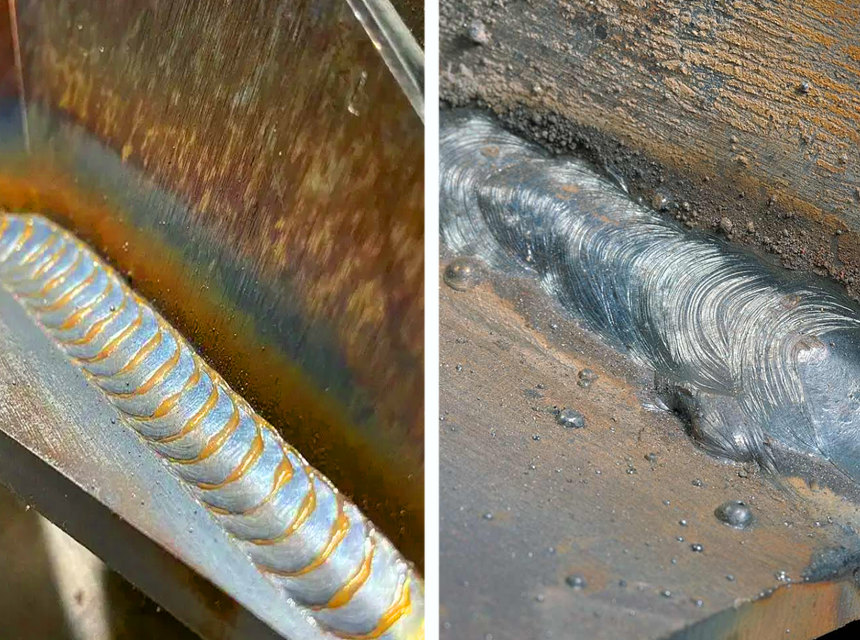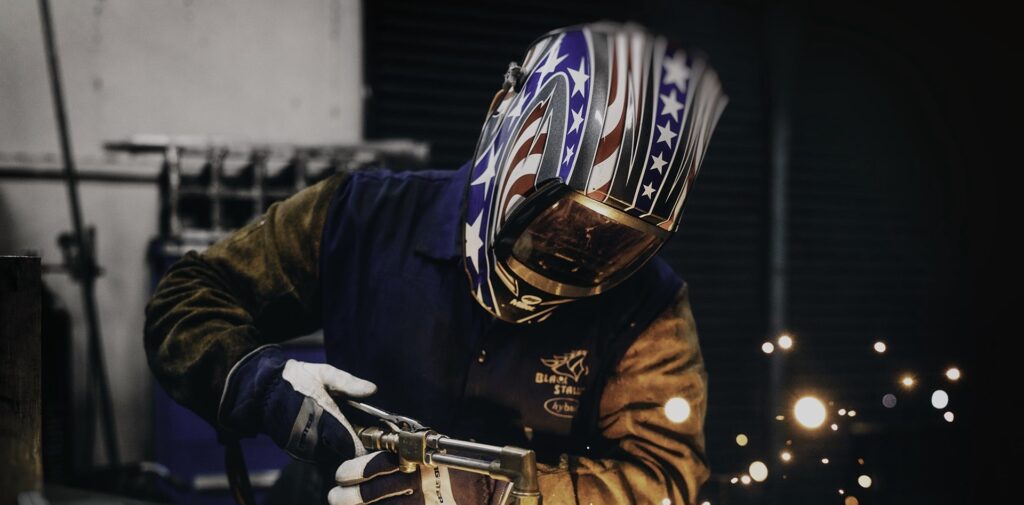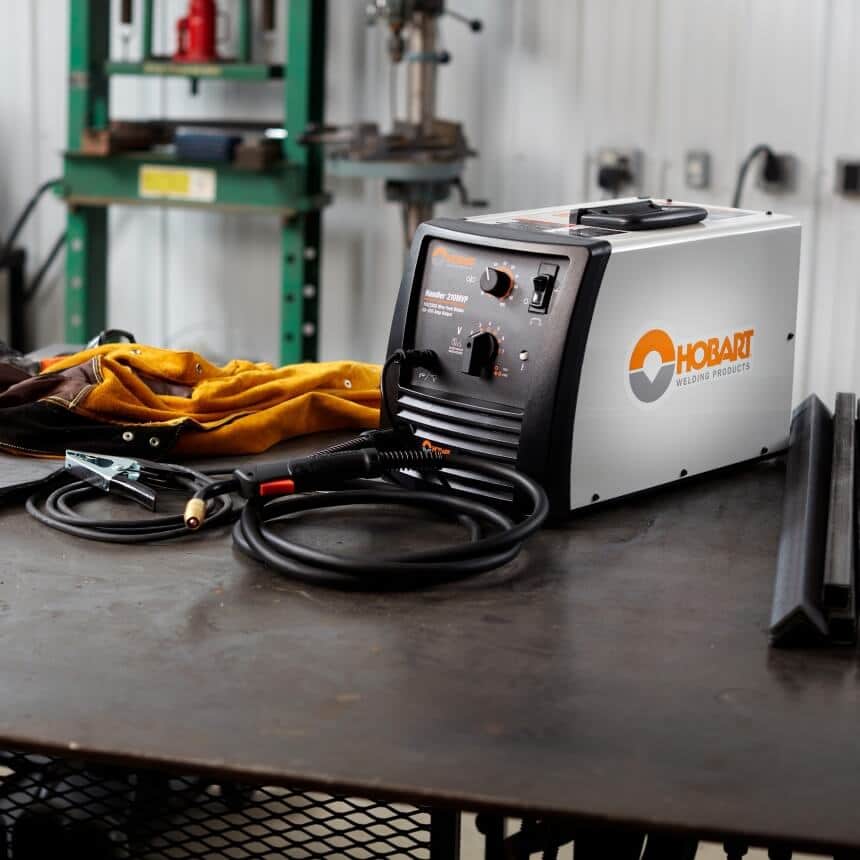It can sometimes seem impossible to get perfect welding work done when you’re an amateur welder. Slag in welding is one of the most unwanted defects welders run away from. But it shouldn’t be so.
While welding the perfect surface can seem impossible, you can avoid these imperfections when you understand how metals work, how the flux process works, and the quality of your tools when welding. So, in this article, we will explain all about slags and how you can remove slags from your welding so you can have a smooth surface and your customers are delighted with your work.
Have you ever seen a welder run those lightning sticks over metal, and before long, the metal is joined? But there are residues on the surface that have just been melded? Well, slag is a byproduct of the welding process. What this means is that those ‘stony’ particles you see after welding iron ore are called slag.
The American Welding Society defines slag as a nonmetallic byproduct of the mutual dissolution of flux with nonmetallic impurities in the welding and brazing process. Their definition basically means that slags are the remains of the arc fluxing of metals.
Now, to make this easier, we need to understand what flux and arc mean before we get entangled in the welding jargon.
That bright blue lightning you see when welders are trying to join two metals together is called an arc. It is formed from the difference in the electric potential of two metals. An arc is formed because at one end of the metal, there is a negative charge of ions, and on the other end, where there are no electrons, there is a positive charge.
The charge difference causes what is known as dielectric breakdown, a term that simply means the flowing of electric current through a conductor that was formed from the subjection of an insulating material to high voltage. When there is a high negative charge from one end and a high positive charge from another end, there is an attempt to balance these charges; hence arcs are formed.
A flux in welding is a chemical flowing agent inside the tabular wire – the wire used in welding. In the welder, the flux is that chemical agent that purifies and controls the flow of oxidation when a welder is welding.
Slag inclusion in welding is a welding defect that is caused by excess slags that have not been removed. And it leads to uneven welding, making the joined metals weak.
Weld slags are caused mainly when the flux is either handled poorly, meaning the welder is careless with using the flux and properly placing the arc on the right spot. Or when the welding technique is poor, meaning the welder doesn’t prepare the metal surface well and has a poor understanding of the tools they are using. Or when the quality of the flux is poor, making for a poor flow of electric currents through the tabular wire.
Whether it is hard slags in welding or soft slags, welders are constantly avoiding slags that will make their welded surface rough and their work amateur. However, slags are not altogether bad in and of themselves because the chemicals that form slags help with the tensile strength of the metal. In addition, slags protect the weld from oxidation because oxidation in welding will cool the arc, therefore making the welding less effective. Slags also keep the weld that has melted pooled at the joint of the two metals being joined.
Slags in welding can either be soft or hard, depending on the process of their formation. But either type of slag isn’t welcomed by welders.
But if you don’t know how to differentiate between a soft slag in welding and a hard slag in welding, the table below will make it simple.
PS: The table doesn’t give the definition of soft slag, nor does it give the definition of hard slag because these definitions are relative.
| Hard slag | Soft slag |
| The color of the slag can either be white or tan. | The color of the tan is gray and it is in powdered form, not as strong as hard slag. |
| It can be removed with grinding or chipping. | It can be removed either through grinding or blasting. |
When welding metals using different welding methods, you will get slags that are either easy to remove or that require more effort to remove. The major reason for the difference in slag strength is the variety of chemical combinations during the arc fluxing that causes the slag.
If the chemicals that are produced during arc fluxing are acidic fluxes, then the slag, which is soft slag, will be easier to remove. But if the chemicals that form the slag contain any fluoride, be it calcium fluoride or nitrogen fluoride, then it will form a hard slag, which is difficult to remove.
There are several welding processes for handling slags.
Having a multipurpose process welder can help make it easy for you to adapt to all these different welding processes. If you love this article, you should check out our list of the best multipurpose process welders.
This semi-automatic arc welding process uses the wire feeder to drop the electrode filler metal; a metallic wire is used to fill the gap between the base metals that are being joined.
You might be wondering why this method is called Flux-Cored arc welding. It is because the flux used is contained in the filler wire. But, the flux is not as strong as what we have in Self-shielded Flux-Cored Arc Welding; therefore, additional shielding gas is used to provide extra protection for the flux. Because flux and shielding gas is used in this welding, that is why it is called dual-shield flux-cored arc welding.
Now, unlike the other arc weldings we discussed earlier, the slag produced from the dual-shielded flux-cored arc welding is smoother, making it a perfect slag for welders who want to finish their welding work fast. The slag is also easy to remove; chipping will do the trick easily.
The self-shielded flux-cored arc welding, just like the name implies, has a self-processing flux. Also known as inner Shield Welding, the self-shield flux-cored arc welding uses an electrode coated with flux and not the flux being put on the metal to form a weld path.
As you start welding, the flux melts, and the electrode melts over the joint. However, to continue welding, you’ll need to remove the slag intermittently because if you don’t, the metal surface that you welded will be rough, and the joint won’t be strong enough.
Also, to avoid the droplets of flux touching your skin, use welding protective blankets such as the HANSWAY welding protective Blanket to protect your skin.
Self-shielded Flux-Cored Arc Welding is ideal for outdoor welding because there are no shielding gasses formed, therefore making it perfect when you want to weld a gate, for example.
This welding process produces very strong slags, so it is harder to remove.
This process does not need a flux like the electro slag welding method. Instead, it uses a metal core wire and a wire feeder. Since the process is applied in the automation process, the weld path is set.
After that, a granular, conductive flux is laid in the weld path. To make this more effective, you should use a tool called the flux hopper to evenly distribute the flux around the joint as the electrode goes through the weld path.
The slag that is formed from the melting of the flux stabilizes the arc. It is important to note that slags formed this way are easy to remove, so you don’t need to look for a grinder.
If you want to weld very thick plates, which are about 11/4 inches thick, then electro-slag welding is what you should use. In electro-slag welding, the flux is added before the welding takes place, ensuring that the metals are joined perfectly at the joints.
After you have secured the flux in the right position, you can put the electrode above the flux. Many have described Electroslag welding as more fusion than welding because it lacks an arc.
The arc is absent because the flux is a poor conductor of electricity. As soon as the flux is melted, you can add more to the pool of flux at the joint to harden the joint and make the metals stay glued together.
MIG Welders are great for handling thick plates. You should read our article on the best MIG welders to learn more about this.
While slag can sometimes be perceived as a waste (which it certainly isn’t), there are some benefits that slags give to the welding process, especially when you use certain types of welders.
Some of these benefits include:
Slags can cause:
To prevent any work hazard, it’s good to always wear a good helmet and other protective gear.
If you want to learn about the best welding helmets you can choose from, check out our list of the best welding helmets.
So, now you’ve got a good welder, and you want to weld, but you are worried that slags will disrupt your work and make it look amateurish.
No need to lose sleep anymore!
To prevent slag inclusions when welding, do the following:
Slag inclusions can be both a blessing and a curse when you’re welding. The plethora of slags have their usefulness and, if used well, can be great for your welding works. Slags in welding shouldn’t give you problems. When you have the right welders, the right amperage, the right selection of electrodes, and a wide range of other things you should do when welding, you can have smooth, if not perfect, welded work.
It doesn’t matter what project you’re working on; knowing what flux and electrode to use, the strength of your metals, and what you want to achieve will make your welding jobs easy and smooth.





